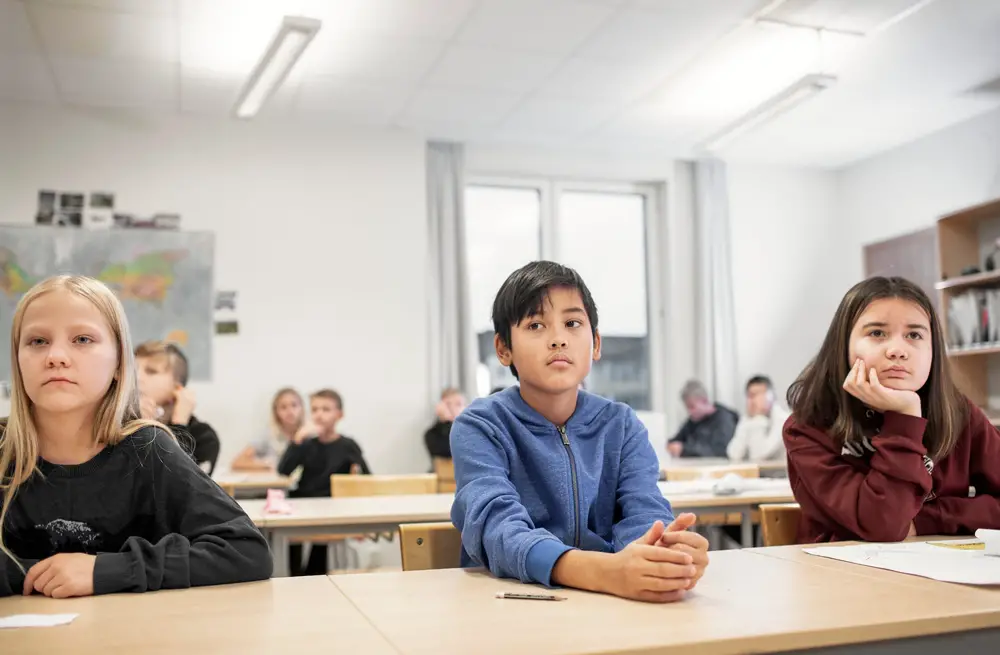
By Daniel H. Robinson and Nicole Miller
Contrary to how it sounds, “year-round” school usually doesn’t mean students going to school throughout the year – or for more days than other students. Often it just means switching up the calendar so that there’s not such a long summer break. Below, two education experts – Nicole Miller and Daniel H. Robinson – answer five questions about the modified school calendars known as year-round school.
What kinds of year-round schools exist?
The first is the “single-track” modified calendar, also known as a “balanced calendar.” The second is the “multi-track calendar.” Neither one is typically an extended year. Instead, both calendars involve moving the 180 school days around so that there are multiple short breaks as opposed to the typical long summer break.
Single-track calendars have all students following the same schedule. This balanced calendar often includes intersessions that provide additional opportunities for learning rather than “summer school.” With a multiple-track calendar, usually created to alleviate school overcrowding, some students are on campus while others are on break.
Balanced calendars often take the form of 45 school days followed by 15 days of break, or 60 school days followed by 20 days of break. Other kinds of modified calendars with shorter intersessions exist in states like Mississippi and South Carolina.
How prevalent is year-round school?
Federal data shows year-round school has been fading in popularity over the past decade or so. In the 2007-2008 school year, 4.4% of schools were on a year-round cycle. By the 2017-2018 school year, that figure had dropped to 2.5%.
However, since the pandemic, there have been signs of renewed interest in single-track year-round calendars, at least in the Southeast.
For instance, in 2020, Louisiana modified its school statute to allow for more flexible calendars. In Mississippi, a significant number of schools shifted to a modified year-round calendar, with 29 of 137 districts using such a calendar in the 2023-2024 school year. In South Carolina, as of 2022, a quarter of school districts had shifted to a modified year-round calendar. These modified calendars typically consist of nine weeks of school with a 5-to-8-day intersession, followed by another nine weeks of school each semester.
Is there any evidence that it works?
That depends on what you mean by “works.” If it means saving money by avoiding having to add buildings, then it is possible for a school that normally serves 750 students to serve 1,000 when going to a year-round, multiple-track schedule. This is because the schedule has different students taking breaks at different times.
But if “works” means an improvement in student achievement, then there is insufficient data to answer that question, especially for single-track calendars. One review found modestly higher student achievement for year-round compared with traditional calendar schooling, but it was also plagued with what we believe were poor studies on which to base conclusions.
What are the potential drawbacks?
There are several challenges involved with switching to a year-round calendar. One is changing child care systems to work with the new calendar. Another is securing funding to provide meaningful learning experiences over the various breaks. Also, problems can arise if a family has children on different calendars.
There are also concerns about how high school students have less time for summer jobs and for students to participate in traditional summer activities such as summer camps.
Then there’s the issue of standardized tests. If schools take longer breaks, it could mean fewer days in school prior to test day.
Depending on the type of year-round calendar, changes can affect sports, particularly practice schedules and game schedules. It can also be a problem if members of the same team are on different tracks.
Also, some schools may not have adequate air conditioning to be open in the hot summer months.
Multi-track calendars might also negatively affect efforts to keep teachers from leaving the job.
What are the potential gains?
Based on prior research investigating learning schedules, a schedule that distributes instruction and practice more evenly over the calendar year should result in better learning.
By having shorter breaks, there could be less learning loss from the extended break over the summers.
Finally, some school districts are hoping for a reduction in teacher turnover by having more frequent breaks. There is some, but not extensive, evidence that modified year-round school does a better job of giving teachers a chance to recharge and come back to the classroom after each break feeling refreshed.
One study found that teachers perceived that they had greater motivation to teach and that student achievement was also positively impacted when teaching in schools with modified year-round schedules.
![]()
Daniel H. Robinson is Associate Dean of Research at the College of Education, University of Texas at Arlington. Nicole Miller is Associate Professor of Elementary and Middle School Education at Mississippi State University.




























Leave a Reply